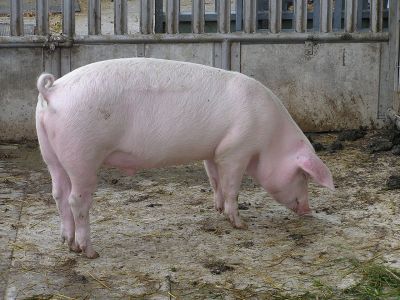Scanning pigs for profit

Sus scrofa scrofa
http://commons.wikimedia.org/wiki/File:Sus_scrofa_scrofa.jpg
Researchers in the EU are building and testing an automated scanner to rapidly measure meat and fat content of pig carcasses.
Annually, the EU pork industry is worth nearly EUR 70 billion. One of the most important aspects of pig carcass processing is the classification of prime pork cuts based on their lean fat content. Currently, this is estimated using a manual probe, which is slow, labour intensive and only provides information about the entire carcass.
The EU is funding the 'Automatic grading system for determining lean-fat distribution in pig carcasses' (PIGSCAN) project to develop a rapid and automated scanner that can detect lean fat content for individual cuts. The final aim is a scanner that can process 900 carcasses per hour and that costs less than EUR 40 000 to build and install.
PIGSCAN is targeting small to medium slaughterhouses and hopes to have a product on the market within a year of the project's completion date.
Researchers have finalised the design specifications and software development for the scanner. The system will run on a computer, and be accessible via a wired or wireless Internet connection.
PIGSCAN tested a number of shielding materials before settling on a combination of ferrite tiles and aluminium panelling. A prototype scanner using magnetic induction and several cameras was built and tested at laboratory scale.
Following this first prototype, PIGSCAN installed several in slaughterhouses for testing in situ. These prototypes provided data to help researchers develop and refine algorithms that could calculate lean fat content in under 15 milliseconds.
PIGSCAN has also made an assessment of the potential market impact, as well as opportunities and threats to launching this device commercially. When completed, PIGSCAN will offer slaughterhouses an affordable and efficient way to get the best value for money from their pork products.
published: 2015-04-13